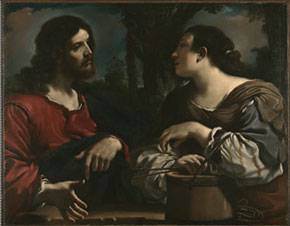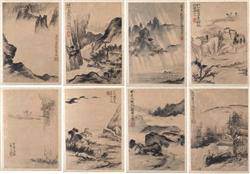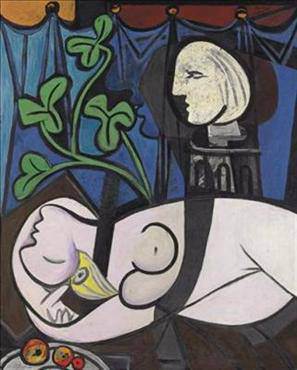
Guercino
Christ and the Woman of Samaria
1619–20
Rare Guercino painting acquired by the Kimbell Art Museum The Kimbell Art Museum of Fort Worth, Texas, has acquired the painting Christ and the Woman of Samaria, dated to 1619–20, by the Italian artist Guercino, one of the foremost painters of his time]]>
May 2nd 2010, source: Kimbell Art Museum
“I am thrilled that the Kimbell has found an outstanding painting, such as this, from Guercino’s coveted early period,” commented Mr. Lee. “It has been a long-standing wish of the Museum to find a Guercino of this quality to enhance its exceptional collection of Baroque art. I look forward to seeing Christ and the Woman of Samaria hanging alongside the Kimbell’s masterpieces by Caravaggio, Georges de La Tour, and Bernini.”
Christ and the Woman of Samaria (38 1/4 x 49 1/8 inches; 97.2 x 124.8 cm) presents a close-up view of the Samaritan woman, who rests her water bucket on the well where she has come to draw water, grappling to understand Christ’s message that he is the living water, the source of eternal life. The painting has never been published or exhibited, and prior to its purchase by a European private collector had been known only through copies and an old photograph of the work that was shown to Guercino expert Sir Denis Mahon many decades ago.
“Christ and the Woman of Samaria is, I believe, the finest painting by the artist to appear on the international market in years,” said Keith Christiansen, the John Pope-Hennessy Chairman of European Paintings at the Metropolitan Museum of Art in New York. He noted that the work is among the handful of paintings, including the Metropolitan Museum’s Samson Captured by the Philistines, “that are generally considered to mark the culmination of his early phase, in which he achieves a quality of dramatic movement through the use of gesture, pose, and brilliant, theatrical lighting. But there is another side to this aspect of Guercino, as beautifully exemplified in the Christ and the Woman of Samaria, and that is an interest in psychological characterization; the story is told not as an unfolding drama but as a moment of revelation, in which the viewer is less an observer than an eavesdropper of a private moment, and this confers on the work a particularly mesmerizing quality.”
Keith Christiansen commented further on the painting’s subject matter and importance: “In the Gospel of John (4:5–42) we read of Jesus coming to Samaria and, wearied, sitting near Jacob’s well. A woman comes to draw water. He asks her for a drink. She is surprised that a Jew would even speak to a Samaritan, upon which Jesus responds, ‘If thou knewest the gift of God, and who it is that saith to thee, Give me to drink, thou wouldest have asked of him, and he would have given thee living water.’ She does not understand, as he has nothing with which to draw water. Is he greater than Jacob, who gave them the well? ‘Whosoever drinketh of this water shall thirst again,’ explains Jesus. ‘But whosoever drinketh of the water that I shall give him shall never thirst.’ This is the moment Guercino depicts. Christ gestures to the well, his serene face turned towards the woman, who is entranced by what she hears. But she has not yet understood, and her face is one of rapt fascination.
“The bit of landscape behind them—the tree—serves to set the scene and offer a counterpoint to their closeness to the picture plane. We seem to overhear this conversation and are situated just the other side of the well—perhaps hidden by some tree or shrub, since the two figures are unaware of our presence. But we hear their words and we too are enraptured by this momentous encounter.” Mr. Christiansen concluded: “This is the brilliance of the picture, which unfolds before us and engages us in the same way as the description of an encounter and dialogue in a great novel. For we have moved from a staged drama to a narrative of psychological penetration.”
Follow us on:


